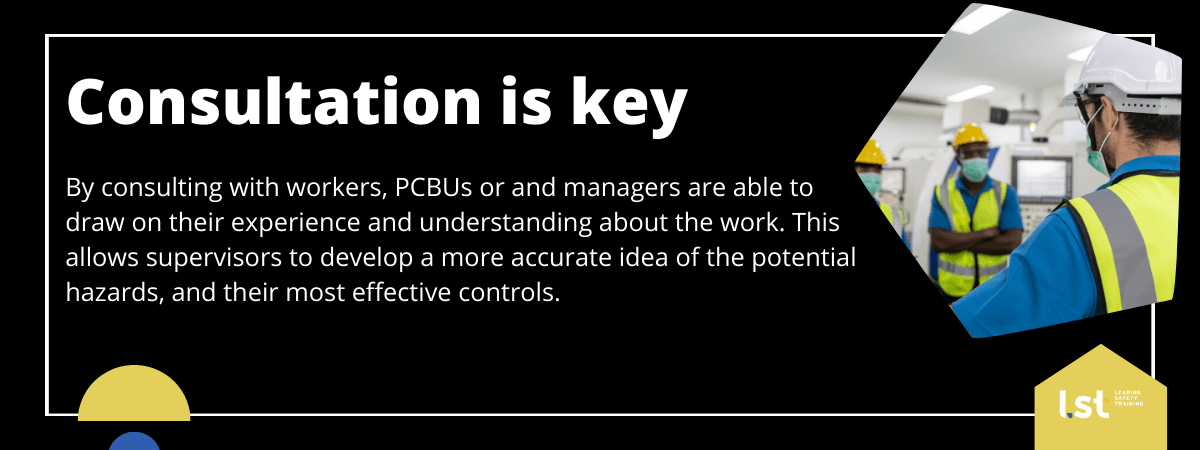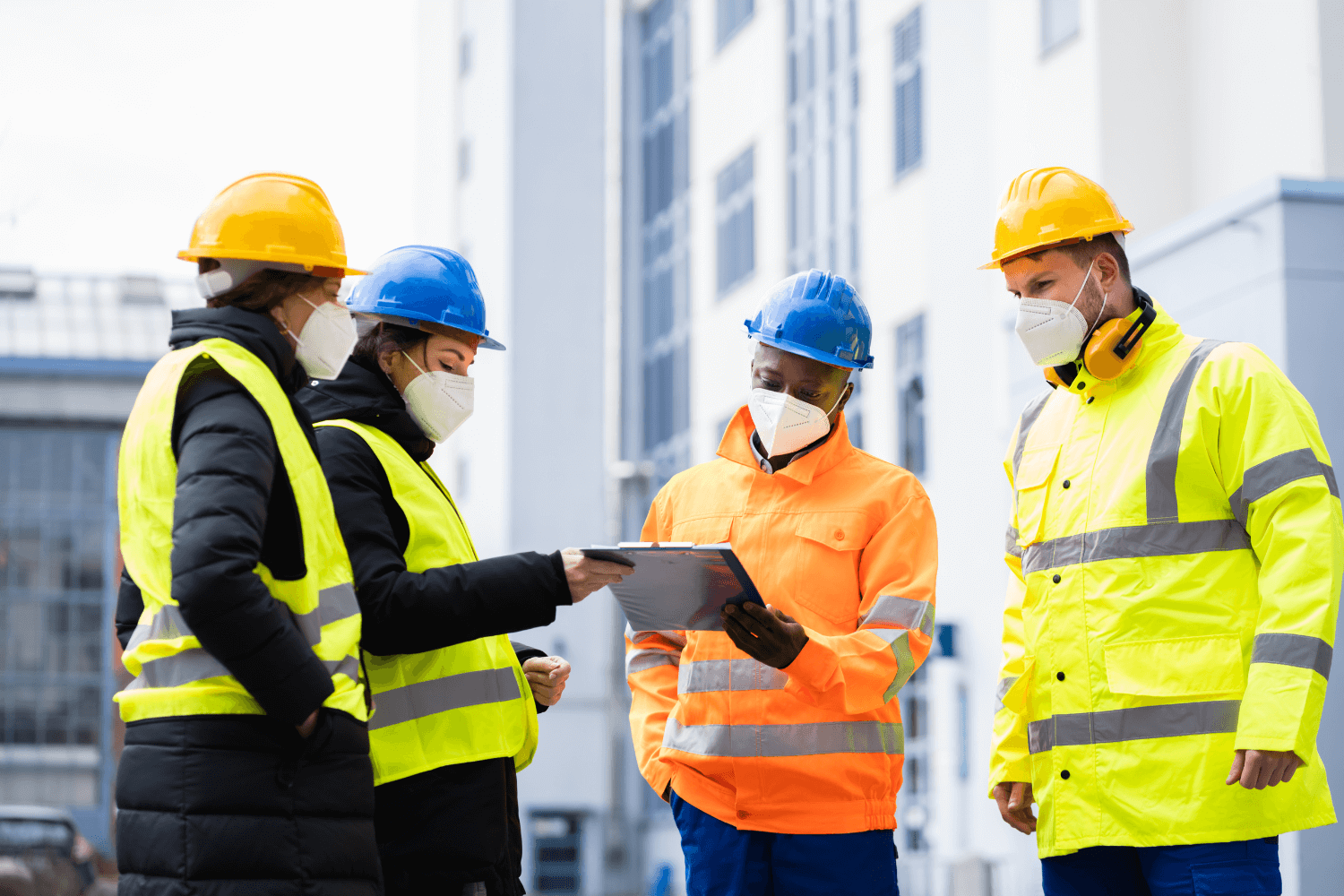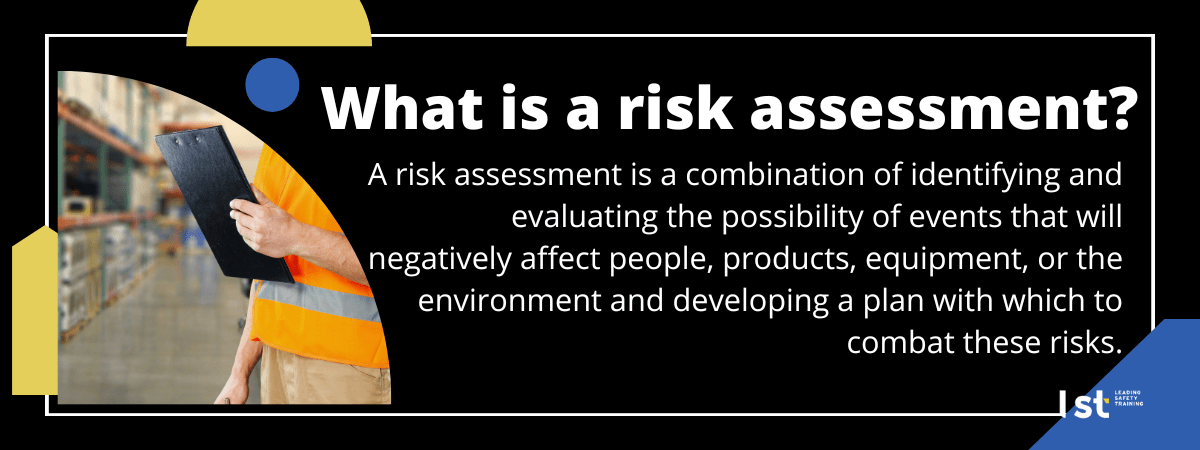Simply put, a risk assessment is a combination of identifying and evaluating the possibility of events that will negatively affect people, products, equipment, or the environment and developing a plan with which to combat these risks. A risk assessment will also consider the factors that impact the probability of these risks occurring. Risk assessments are the foundation of preventing accidents in the workplace.
So, what is a risk assessment used for? And how do you do a risk assessment?
Everyone in the workplace should have a basic understanding of how a risk assessment may fit into the operations of the business. If a risk assessment is not completed regularly, or is performed inaccurately, preventative measures are likely to be ignored, and the likelihood of injury in the workplace increases.
Within this article, Leading Safety Training is going to guide you through what a risk assessment is, how they are performed, and the benefits of regular risk assessment for every workplace.
What Is a Risk Assessment?
A safe, healthy, and secure workplace is not built overnight. Supervisors or those responsible for risk assessments need to consider everything that could go wrong in the workplace, and the consequences of this happening. Then, they must do everything possible, or to use the rhetoric of SafeWork, everything that is “reasonably practicable” to eliminate, or at the very least minimise, these risks from occurring.
Overall, this process is also known as risk management. Risk management involves four primary steps:
How to do a risk assessment
1. Identify hazards
Identify anything in the workplace or the surrounding setting that could cause harm to the workers, environment, or assets.
2. Assess the risks
Understand the severity of the harm that could be inflicted by the hazard and the likelihood of it happening.
3. Control the risks
Implement the most effective control measures that fit the circumstances of the hazard and ensure they remain effective over time.
4. Review hazards and control measures
Continually review the hazards and their associated control measures to ensure they are working as intended.
Implementing the risk assessment process will occur differently across workplaces, depending on their size and business structure. Larger businesses or industries where workers are exposed to higher-level risks will require more detailed and meticulous risk assessment procedures.
Finally, supervisors or PCBUs conducting risk assessments must consult with staff and health and safety representatives at every stage of the process. By consulting with workers, you draw on their experience and understanding of the nature of the work. This allows supervisors to develop a more accurate idea of the potential hazards, and their most effective controls.

The Benefits of a risk assessment
Firstly, a risk assessment process by workplace authorities in every Australian state or territory, but this is for a good reason. There are several benefits to conducting regular risk assessments for all tasks:
1. Recognise and control hazards in your workplace.
One of the premier benefits of a risk assessment in the workplace is the recognition it gives to everyday risks, and the implementation of valuable controls. Threats are common in any workplace, and an evaluation will identify them and assist supervisors in putting controls in place to avoid hazards.
2. Create awareness of hazards among your employees
Why do a risk assessment? Doing a risk assessment establishes the existence of risks amongst employees, and helps them develop their awareness of safe work practices. Risk assessments are a valuable training tool for workers too.
3. Set risk management standards
When it comes to an understanding of ‘what is a risk assessment?’ the answer is also based on developing acceptable safe practices and legal requirements in the workplace. A risk assessment is a supervisor or PCBUs opportunity to set the standard for workplace safety early on, and foster an aware workplace culture.
4. Reduce incidents in the workplace
Simply put, risk assessments save lives. By having an accurate risk assessment process, you can avoid accidents, injuries and even casualties in the workplace. Risk assessments are centred on education and awareness, and help keep workers out of dangerous situations.
5. Save costs
Risk assessments will save your business money in the long run. Risk assessments may be mandatory for workplace insurance policies and help keep workers operating efficiently. Injuries to workers delay productivity, so by keeping your workers safe, you’re keeping your business moving.

Proactive vs reactive policy
Risk assessments are a proactive way of approaching risk management. By controlling hazards before they cause damage, you can prevent significant events from occurring. Alongside a risk assessment, there are other systems that can be put into place to lower the chances of a severe incident:
- Frequent training
- Meticulous inspections
- Standard work procedures
- Heightened overall employee fitness
- Regular maintenance of equipment
- Ensuring adequate and competent supervision of workers
Compared to reactive policies, proactive policies are more cost-effective. If you wait until an incident has occurred before enacting a risk management system, it will cost you a lot more.
What costs are associated?
Compared to the costs of a risk management policy after an incident, knowing the answer to ‘what is a risk assessment?’ and how to enact one will lower your upfront management costs. These costs include:
- Costs of purchase, installation, maintenance, and operation of the controls
- Slight impact on productivity as a result of the introduction of the control measure, including a reduction in output or increase in work hours
As a business operator, consider these costs relative to the amount you will save from reductions in accidents, injuries, deaths, worker sickness, and staff turnover.
Risk assessment with Leading Safety Training
So, what is a risk assessment? Your ticket to a safe and productive working environment! Knowing how to do a risk assessment will prove invaluable for your business and keep your workers safe. If you are interested in learning more about workplace safety, or you are looking to get your business further certification, why not book in with one of Leading Safety Training’s workplace health and safety courses?
As a leading WHS course provider, Leading Safety Training is determined to develop the knowledge required to uphold safe working practices to avoid harm or damage to and within the workplace. All of our courses are held by experienced and qualified workplace safety experts, who will run you through the basics of risk assessments, as well as other essential safety procedures at work. Book a work health and safety course for your team today.


